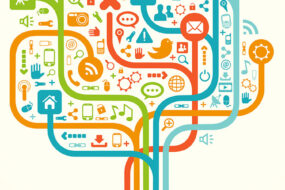
In recent years, immersive technologies like Augmented Reality (AR) and Virtual Reality (VR) have made significant strides, influencing a range of industries from entertainment to healthcare. While both AR and VR offer transformative experiences, they differ fundamentally in how they engage users with digital content. As we move into the future, it’s clear that these technologies will continue to evolve, creating new possibilities in entertainment, education, healthcare, and business. In this article, we’ll compare AR and VR in key areas, exploring their current applications, future potential, and where each technology is headed.
1. Entertainment: From Gaming to Live Experiences
Both AR and VR are revolutionizing the entertainment sector, but they do so in fundamentally different ways.
Virtual Reality (VR) in Entertainment
Virtual Reality immerses users completely in a digital world, cutting off real-world sensory inputs and replacing them with virtual ones. In the entertainment industry, VR is most notably making waves in gaming and live experiences.
- Gaming: VR gaming provides a truly immersive experience, allowing players to interact with virtual worlds as if they were physically inside them. Platforms like Oculus Rift, HTC Vive, and PlayStation VR offer a wide array of titles, from action-packed shooters to relaxing puzzle games.
- Live Events: VR is also transforming live entertainment, enabling users to attend concerts, theater performances, or sporting events in a fully immersive digital environment. For instance, Travis Scott’s VR concert in Fortnite was attended by millions, offering a completely new way to experience live music.
Augmented Reality (AR) in Entertainment
AR overlays digital content onto the physical world, allowing users to interact with both simultaneously. AR is bringing a different kind of interactivity to entertainment.
- Mobile AR Games: Games like Pokémon GO and Harry Potter: Wizards Unite use AR to blend the real world with digital elements, encouraging users to interact with their surroundings in new and fun ways.
- Interactive AR Experiences: AR is also enhancing live entertainment by adding digital elements to live performances. For example, AR projections can be used in concerts or theater performances to bring characters, effects, or entire sets to life in real-time, enhancing the audience’s experience.
Future Trends
- VR: Expect more photorealistic VR experiences, with improvements in graphics rendering, motion tracking, and haptic feedback technology. VR will continue to evolve in gaming, but it will also become more integrated with other forms of entertainment like virtual cinema and interactive storytelling.
- AR: As AR technology improves, we will likely see more location-based games and experiences that blend the virtual world with the physical environment. With the rise of AR glasses (like Apple’s rumored AR headset), we could see a future where AR is seamlessly integrated into daily life, offering entertainment experiences everywhere.
2. Education: Interactive Learning and Immersive Classrooms
Both AR and VR are pushing the boundaries of traditional education by creating engaging, interactive learning environments.
Virtual Reality (VR) in Education
VR has the ability to transport students to different times, places, or even worlds, making complex topics much easier to grasp.
- Virtual Field Trips: VR enables virtual field trips to historical landmarks, museums, or even the surface of Mars, making learning more engaging and interactive.
- Simulated Environments: VR is particularly valuable in fields that require hands-on training, such as medicine, engineering, and aviation. Students can practice surgeries, technical repairs, or flying an aircraft in a safe, controlled VR environment.
- Immersive Classrooms: VR can recreate a classroom experience in a fully virtual setting, allowing students from around the world to attend classes and interact with each other in a shared, immersive space.
Augmented Reality (AR) in Education
While VR immerses the learner in a fully virtual world, AR adds value by enhancing the real world with additional information or interactive elements.
- Interactive Textbooks and Tutorials: AR can turn textbooks into interactive experiences, with 3D models or videos appearing when students scan images. For instance, biology students could use AR to examine the human body in 3D by simply scanning a page in their textbook.
- Real-World Context: AR helps students visualize complex concepts in the context of the real world. For example, engineering students can use AR to overlay instructions or 3D models onto physical objects for a better understanding of mechanical design.
Future Trends
- VR: Expect VR to continue to play a major role in remote learning and immersive simulations. As the technology becomes more affordable and accessible, expect VR to become an integral part of curriculums in a wide range of subjects.
- AR: AR will likely play a larger role in interactive textbooks, personalized learning, and real-time feedback systems, helping students engage with lessons in a dynamic, contextual way.
3. Healthcare: From Surgery to Mental Health
Both AR and VR are poised to revolutionize healthcare by providing innovative solutions for training, treatment, and patient care.
Virtual Reality (VR) in Healthcare
VR is already being used in various ways to improve both medical training and patient care.
- Medical Training and Simulations: VR enables medical students and professionals to practice surgeries and other medical procedures in a safe, controlled environment. For example, Osso VR provides a simulated platform for surgeons to practice and perfect their skills without the risk of harming patients.
- Pain Management: VR is also being used as a therapeutic tool. For example, VR immersion therapy has been used to help patients manage chronic pain, PTSD, and anxiety. By immersing patients in calming virtual environments, VR has been shown to reduce the perception of pain and improve emotional well-being.
Augmented Reality (AR) in Healthcare
AR is transforming healthcare by providing real-time, context-sensitive information that aids in diagnosis and treatment.
- Surgical Assistance: Surgeons are increasingly using AR for real-time imaging during surgery. For example, Microsoft’s HoloLens has been used to overlay medical imaging onto a patient’s body, giving surgeons enhanced insight into the anatomy and improving the precision of their procedures.
- Patient Education: AR can also help patients understand their medical conditions. For instance, AR apps can allow patients to visualize how a surgery will proceed or see detailed 3D models of organs to better understand their diagnosis.
Future Trends
- VR: The use of VR in mental health treatment and rehabilitation will continue to grow, especially for conditions like PTSD, phobias, and anxiety. VR could also be further integrated into patient care, with personalized treatment plans using immersive environments to promote healing.
- AR: AR will likely continue to enhance real-time diagnostics, pre-surgical planning, and remote surgeries. As AR glasses become more common, expect a future where doctors can access critical patient data and real-time updates directly in their line of sight during procedures.
4. Business: Virtual Workspaces and Interactive Customer Engagement
Both AR and VR are redefining how businesses operate, collaborate, and engage with customers.
Virtual Reality (VR) in Business
VR is rapidly gaining traction in business as a tool for collaboration, training, and customer engagement.
- Virtual Workspaces: With the rise of remote work, VR platforms like Virbela and Spatial are offering virtual office environments where teams can collaborate in 3D spaces, making remote meetings feel more interactive and engaging.
- Training and Simulation: Companies use VR to train employees in various fields, including manufacturing, logistics, and customer service. For instance, VR can simulate high-risk environments (like oil rigs or construction sites) to train employees without putting them in harm’s way.
- Virtual Showrooms: Retailers and businesses are using VR to create immersive experiences where customers can browse products or visit virtual stores without leaving their homes.
Augmented Reality (AR) in Business
AR’s ability to blend the physical world with digital enhancements is especially valuable in customer engagement and product development.
- Product Visualization: AR is widely used in e-commerce to help customers visualize products before buying. For example, IKEA’s AR app lets customers see how furniture will look in their homes before purchasing.
- Field Service: AR can help technicians in the field by providing real-time instructions or overlaying troubleshooting data onto physical equipment, enhancing their ability to perform repairs or installations on the spot.
Future Trends
- VR: In the future, expect VR to become a more integral part of virtual conferences, remote team collaboration, and customer service training, enabling businesses to create immersive, interactive experiences for both employees and customers.
- AR: AR will likely play a crucial role in customer interaction and personalized marketing, with businesses creating highly interactive experiences that blend digital content with real-world environments.
Conclusion: The Future of AR and VR
As AR and VR technologies continue to evolve, their applications will only become more widespread and integrated into everyday life. Virtual Reality will continue to be the go-to technology for creating fully immersive, digital experiences, excelling in areas like gaming, training, and remote collaboration. Meanwhile, Augmented Reality will blur the line between the real and digital worlds, enabling more interactive and context-sensitive applications across entertainment, education, healthcare, and business.
The future of immersive technology is exciting, and as AR and VR continue to develop, we can expect even more








